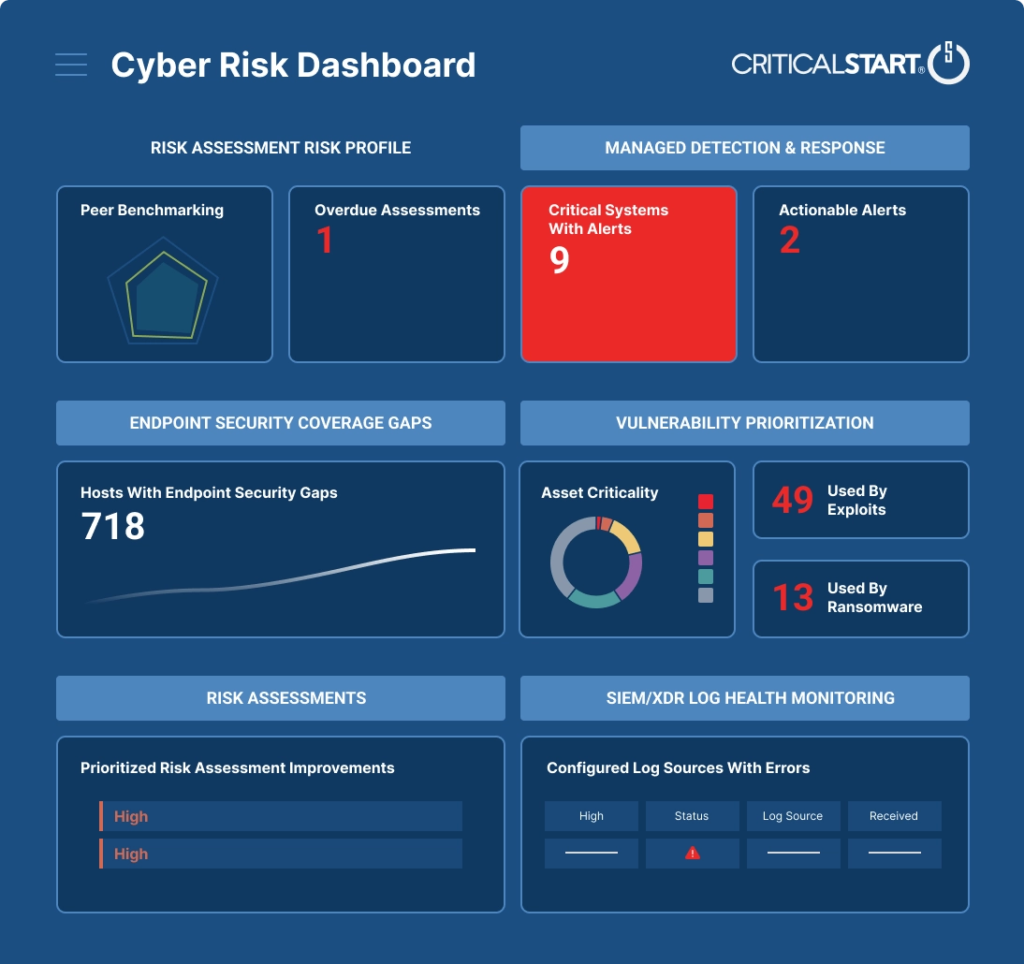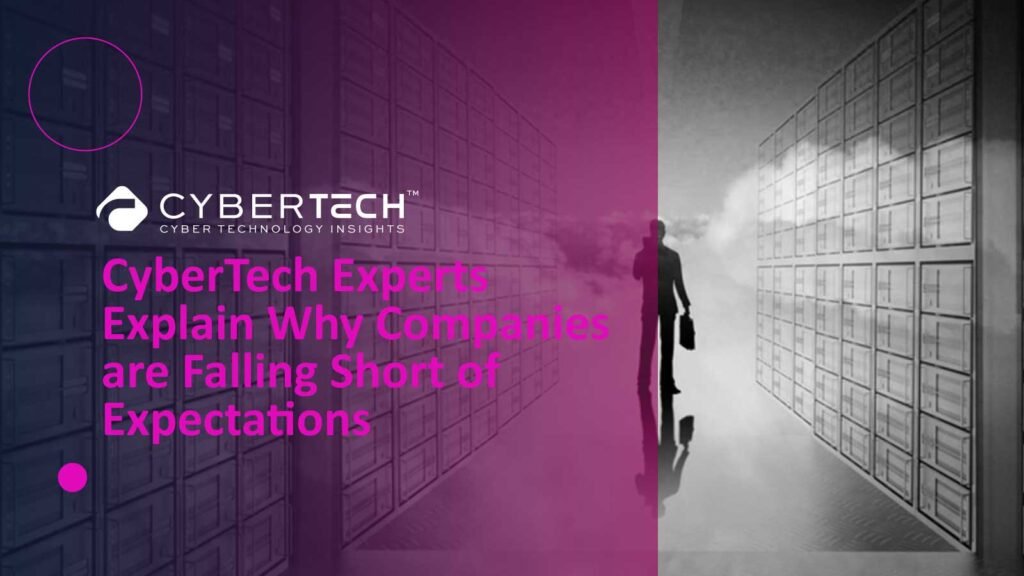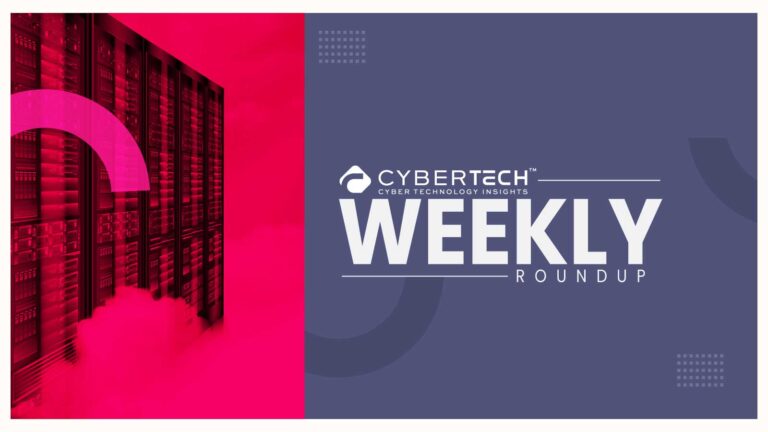Cybersecurity leaders and SecOps managers, collectively called CyberTech Experts, are facing an overwhelming number of cyberattacks in 2024. According to the latest data breach reports, financial and operational implications of cyberattacks are at an all-time high. Despite having access to the best cybertechnology tools and solutions, cybersec teams reel under the growing pressure of salvaging customer trust and corporate reputation. Managed Detection and Response (MDR) solution provider, Critical Start explained the need to embrace a proactive, risk-based cybersecurity approach in its annual report.
Our CyberTech reporters accessed the full report and distilled the key takeaways for our readers.
The article also includes insights shared by the cyber tech and security experts:
- Chris Morales, Chief Information Security Officer at Netenrich
- Jason Soroko, Senior Vice President of Product at Sectigo
- Piyush Pandey, CEO at Pathlock
- Randy Watkins, Chief Technology Officer at Critical Start
Unknown Organizational Cyber Risks Emerge as the Chief Concern for Cybersecurity Professionals
Most security teams have zero preparation against unknown organizational cyber risks. In its second annual edition, the Critical Start Cyber Risk Landscape Peer Report recognized cyber risk mitigation as a challenge for organizations. The report found that 86% of respondents named “unknown” organizational cyber risks as currently a top concern, growing by 22% from 2023. This trend signifies the dire need to invest in threat-based detection and response systems, in addition to advancing proactive cyber risk management practices to secure vital infrastructure.
Most Companies Fall Short of Meeting the Alignment Goals in IT Practices
Cybersecurity professionals face a daunting task due to a misalignment between cybersecurity investments and risk mitigation (reduction) priorities. 66% of businesses report limited visibility and insight into their cyber risk profiles (same as 2023). Likewise, 65% of executives (61% in 2023) expressed concerns over misalignment between cybersecurity investments and the organization’s risk reduction priorities. It shows cyber risk management protocols haven’t improved in the last 12 months.
At the time of this announcement, Chris Morales, Chief Information Security Officer at Netenrich spoke to our publication. Chris said, “Navigating the balance between budget constraints and the escalating costs of cyber incidents is challenging. However, cybersecurity is not just a cost center. It is a critical component of overall business resilience and trust. In addition, security burnout, an escalating issue in the cybersecurity community, has reached a crucial point, especially for security analysts and managers handling their organization’s security operations. This burnout is primarily due to the increasing volume of security events and is further exacerbated by a skills shortage and the complexity of managing these newer threats.”

Chris added, “Embracing technology that amplifies IT and security teams’ capabilities enables them to stay ahead of threats despite budgetary constraints. The solution is not simply acquiring more tools or hiring more talent but a strategic shift towards a data-driven approach. This approach empowers IT and security professionals, unlocking greater value from existing investments while enhancing the work environment for security and operations teams.”
Staffing Challenge: A Persistent Threat for Cybersecurity Teams, but An Opportunity for MDR Solution Vendors
Threat detection and response serve as a critical final defense. Together, they safeguard organizations from escalating cyberattacks that could result in substantial data breaches and severe operational disruptions.
Read More CyberTech News: Guidewheel Gets $31M to Expand AI-Driven FactoryOps Globally
Randy Watkins, Chief Technology Officer at Critical Start said, “Based on our research, 99.4% of cyber leaders want to combine proactive security elements into their detect and response capabilities. By incorporating capabilities such as finding hidden assets, endpoint coverage gaps, and failed log ingestion, organizations can improve security operations outcomes.”

In 2023, 37% of cybersecurity professionals mentioned the lack of expertise as a serious challenge in effective cyber risk management. In 2024, irrespective of the growth of AI-based assistants for security professionals, the number of professionals lacking expertise increased to 50%!
Critical Start found this as an opportunity to highlight the role of MDR solutions in designing and operating an effective mitigation strategy navigating the complex and dynamic cyber threat landscape. It aligns well with the distinct requirement within an organization to adopt a managed cyber risk reduction approach within the next two years. 99% of cybersecurity professionals are signaling this shift in the cybersecurity landscape, highlighting MDR’s role in navigating the complex, dynamic cyber threat landscape.
Collaboration and Coordination Key to Building Cost-effective Cyber Risk Strategy
Cyber risk monitoring will rule for the next 2 years.
According to Critical State, cybersecurity professionals consider “time” the most important resource to monitor areas that could lead to failure or breach. 84% of respondents agree that continuous cyber risk monitoring will reduce the likelihood of breaches– however, most professionals lack the time to do monitoring. Leaders should consider adapting proactive cybersecurity practices with robust MDR services that evolve continuously to new threat intelligence and incidents.
Piyush Pandey, CEO at Pathlock said, “Whereas cyber risk monitoring was traditionally focused on the IT infrastructure risks presented by hardware-software bugs, today’s threats are focused on user access. Organizations need to know what level of risk they are willing to take with user access and adjust their access policies accordingly. That is trickier than it sounds because a policy that is too restrictive hampers productivity and causes user frustration which often leads to workarounds that create greater risk. Organizations can stay ahead by eliminating access risk – early and often. From doing access risk analysis prior to providing access to ensuring access is granted in a compliant manner supported by regular user access risk assessments and certifications, an organization can ensure that they are doing all they can to create a zero-risk environment.”
Recommended News: Palantir and Microsoft Bolster National Security with AI and Cloud Partnership
Piyush added, “Like many functions in an organization, challenges are driven by the costs associated with internal and external resources. In the case of monitoring cyber risk, the ability to automate critical, but routine tasks can help reduce the workload of internal audit, risk management, and IT security. Defining a well-thought-out set of workflows for managing access and monitoring access and transaction exceptions in real-time can free up internal resources, reduce the dependency on external resources, and create a more proactive risk management program.”
Is Your Business a Sitting Duck? CyberTech Experts Say “Yes”
Critical State revealed that a staggering 83% of cybersecurity professionals have encountered at least one cyber incident demanding immediate response. This is happening despite the implementation of conventional threat-based detection and response solutions. This figure represents a sharp escalation compared to previous years, underscoring the growing ineffectiveness of traditional security measures in the face of evolving cyber threats.
Jason Soroko, Senior Vice President of Product at Sectigo said, “Unlike traditional cybersecurity, which focuses on prevention, cyber resiliency ensures continuous operations during and after incidents. As threats evolve, so must an organization’s defenses, adapting to advanced persistent threats, zero-day exploits, ransomware, and supply chain attacks. Cyber resiliency is crucial for business continuity, minimizing operational, financial, and reputational damage, meeting regulatory requirements, and maintaining customer trust.”
Jason added, “Achieving cyber resiliency begins with a thorough risk assessment to identify and prioritize assets, threats, vulnerabilities, and potential impacts. Developing a comprehensive resiliency plan that includes strategies for prevention, detection, response, and recovery is essential. Implementing a robust security architecture with layered defenses and establishing a well-defined incident response plan with clear roles and responsibilities are critical steps. Continuous monitoring, including real-time systems and threat intelligence, helps detect and respond to incidents swiftly.”
Proactive Cybersecurity with MDR: A Imperative for Modern Enterprises
While MDR solutions are crucial to cyber risk prevention, these can’t operate in silos or isolation. Critical State cites the role of complete signal coverage for MDR effectiveness and consistency. To meet these growing cyber security demands, Critical State added enhancement to its MDR offerings, enabling customers to secure all threat endpoints from suspicious activities.
What’s next?
Numerous reports show the cybersecurity landscape is evolving at a relentless pace. With threats becoming increasingly sophisticated and complex to detect, monitor, and recover, traditional, reactive security measures are no longer sufficient to protect organizations from the devastating consequences of cyberattacks. A proactive MDR approach is essential to safeguard critical assets, maintain business continuity, and protect brand reputation.
Moreover, the alarming statistics on cyber breaches underscore the urgent need for a paradigm shift for CISOs and AppSec managers. Despite significant investments in security technologies, organizations continue to fall victim to attacks. This highlights a critical gap in traditional security strategies—the inability to anticipate and prevent threats before they materialize.
The Way Ahead: How Should CIOs and CISOs Prepare for 2025?
CIOs and CISOs must embrace a proactive cybersecurity posture to address the latest cyber risk challenges. This involves shifting the focus from merely detecting and responding to incidents to anticipating, preventing, and mitigating threats. Managed Detection and Response (MDR) services offer a compelling solution to high-growth industries that are at the highest risk of a cyber attack. Companies operating in these sectors often require not just cybersecurity defense but also marketing support to build visibility and generate qualified leads. Intent Amplify®, a B2B lead generation and account-based marketing powerhouse, partners with cybersecurity and tech providers to amplify demand and fuel revenue pipelines through strategic outreach.
Leveraging MDR services allows organizations to benefit from the following advantages:
- Enhanced Threat Detection: MDR providers employ cutting-edge technologies and skilled analysts to continuously monitor networks, endpoints, and cloud environments for suspicious activities. This proactive approach enables early detection of threats, allowing organizations to take swift countermeasures.
- Rapid Incident Response: In the event of a cyberattack, MDR teams are equipped to respond swiftly and effectively. Their expertise in incident handling, combined with access to advanced tools, ensures minimal disruption to business operations.
- Vulnerability Management: MDR providers conduct regular vulnerability assessments to identify and prioritize weaknesses in an organization’s IT infrastructure. By addressing these vulnerabilities proactively, organizations can significantly reduce their attack surface.
- Threat Intelligence: MDR services provide access to valuable threat intelligence, enabling organizations to stay informed about the latest attack trends and tactics. This intelligence can be used to refine security strategies and enhance defenses.
Investing in cybersecurity technology is crucial, but it is equally important to recognize the value of human expertise. MDR services offer a combination of both, ensuring that organizations have the necessary resources to navigate the complex and ever-changing threat landscape.
By partnering with a reputable MDR solutions provider, CIOs, and CISOs can significantly enhance their organization’s security posture and build resilience against cyberattacks.
In conclusion, the imperative for proactive cybersecurity has never been more urgent. By adopting MDR services and investing in technology and human expertise, organizations can effectively mitigate risks, protect critical assets, and build a strong foundation for long-term success.
To share your insights with CyberTech Newsroom, please write to us at news@intentamplify.com






